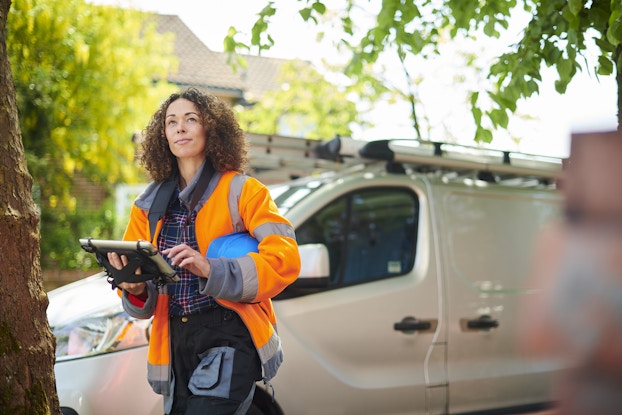
Many businesses have company vehicles on the road at any given time — from fleets of delivery drivers to company cars used by salespeople to shuttle buses and limos used to transport passengers. No matter the types of business vehicles your company owns, tracking them and using the data is an easy way to streamline your business operations and protect employees and assets.
Here are some reliable ways to keep track of your company vehicle use.
[Read more: 10 Timely Delivery Business Ideas]
Track the right data
Using the right data can help your company reap many benefits, such as improving the efficiency of administrative employees who handle company vehicles, increasing tax savings for the company by deducting mileage as a business expense, and identifying underperforming employees (or employees who misuse the company's assets). Additionally, the data can help identify areas of overspending and ensure that employees use company resources wisely.
If you have company vehicles on the road, be sure to track the right data, including:
- Trip dates: Keep an accurate record of each trip’s data by logging and organizing it under the specific date. This ensures a precise record of each time your employee uses the vehicle, holding employees accountable and reducing costs.
- Mileage: Tracking a vehicle's mileage helps to understand how far an employee went, as there’s a record of how many miles were on the car before departure and after it returned. This information can identify instances of personal use with the vehicle.
- Working hours: Similar to tracking mileage, tracking working hours will ensure employees are only using the car during business hours, not for personal use.
- Driving behaviors: Many systems track driver behavior including harsh braking, extreme acceleration, excessive idling, speeding, and more. This data helps to detect bad driving behaviors that contribute to a vehicle's wear and tear.
- Current location and destination: As a business, tracking an employee’s location and intended destination allows you to see your vehicle’s exact location at any given moment, protecting your assets in case of theft. This data allows you to better dispatch your services and provide customers updates on where the driver is and what time they should arrive (should your business provide a service to a client).
[Read more: 5 Things to Know About Company-Owned Vehicles]
Some services give real-time safety alerts and driving reports ... to better understand how and when your employees operate company vehicles.
Use a fleet management service
Many businesses track their company vehicle usage manually by relying on employees to log hours and note their mileage use; however, this imposes a burden on the company and requires additional resources. Instead, businesses can benefit from enlisting the help of a fleet management service, which allows businesses to track and gain insight into their vehicle fleets and employee behavior through a comprehensive system — taking most of the guesswork and manual labor out of the process.
Here’s what you should look for in a fleet management service:
- Hardware and installation: Plug-and-play hardware is a common feature to look for, as it takes less than 10 minutes to install and doesn’t require the help of a professional. Generally, you can install this hardware by connecting its two wires to the vehicle’s battery.
- Driver safety and performance: This feature allows you to track your employees’ driving behaviors, flag unsafe habits, and hold drivers accountable for their actions. It helps your company avoid liability by ensuring your employees are driving responsibly and not endangering others on the road or your company's assets.
- Vehicle maintenance tracking: This feature can track odometer readings, fuel levels, battery voltage, coolant, engine temperatures, and more to identify when your vehicle requires maintenance. With this data, you can ensure your vehicles are safe for employees to operate and are being properly maintained to improve their longevity.
- GPS tracking: GPS tracking is a must to determine where your company car is at all times, as well as its mileage. Some tracking software offers features such as geofencing that can create a virtual boundary in which an employee triggers a response when traveling into a restricted zone.
- Alerts and reports: Some services give real-time safety alerts and driving reports (which you can customize based on your business’s needs) to better understand how and when your employees operate company vehicles. This can help pinpoint areas for improvement and identify where you can cut costs — such as omitting needless stops or revising poorly planned routes.
[Read more: 10 Fleet Management Tools for Small Businesses]
CO— aims to bring you inspiration from leading respected experts. However, before making any business decision, you should consult a professional who can advise you based on your individual situation.
CO—is committed to helping you start, run and grow your small business. Learn more about the benefits of small business membership in the U.S. Chamber of Commerce, here.









